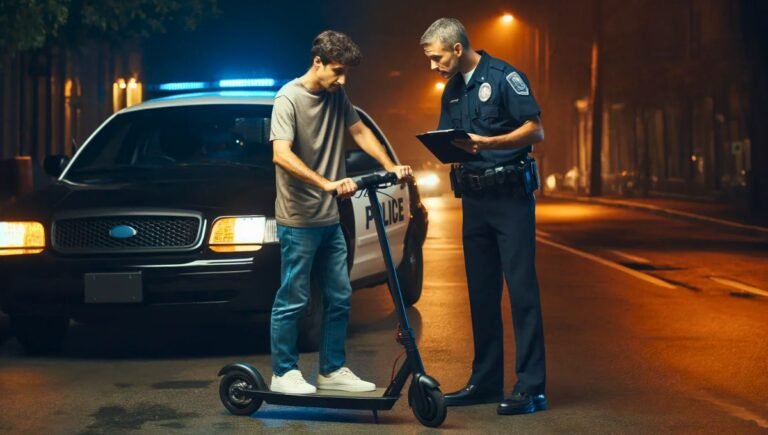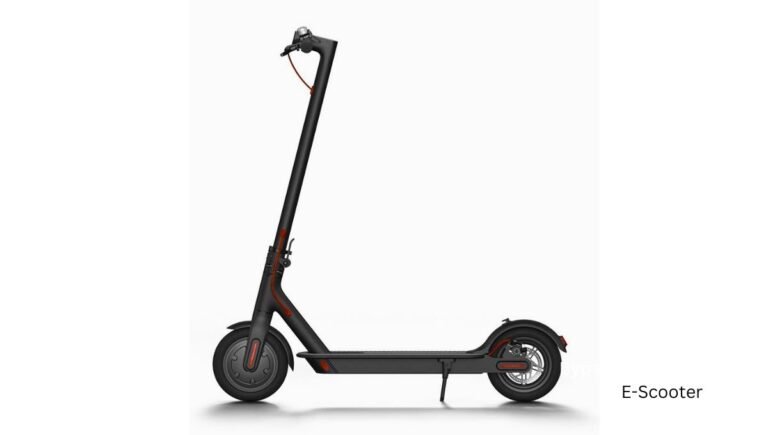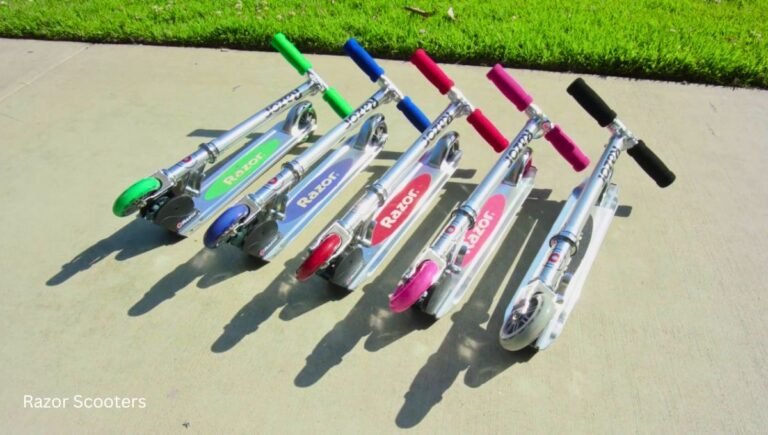How to Fix an Electric Scooter: Quick DIY Solutions
To fix an electric scooter, identify the problem and locate the affected part. Replace or repair the faulty component as needed.
Electric scooters are a popular and eco-friendly mode of transportation. However, like any other vehicle, they can encounter technical issues. Sometimes, the scooter may not start, the battery may not charge, or the brakes may not work properly. In such situations, it is essential to fix the problem as quickly as possible to ensure safe and smooth riding.
The first step is to identify the issue by checking the battery, motor, brakes, or any other component. Once the problem is identified, the next step is to locate the affected part and repair or replace it. In this blog post, we will discuss some common electric scooter problems and how to fix them.
Introduction To Electric Scooter Troubleshooting
An electric scooter is a convenient and eco-friendly mode of transportation, but like any mechanical device, it’s prone to issues. Understanding how to troubleshoot common problems can save you time and money. In this guide, we’ll explore the most frequent issues faced by electric scooter owners and the essential safety precautions to take before starting any repairs.
Common Issues Faced By Electric Scooter Owners
Electric scooters may encounter various issues that can affect their performance and safety. These include battery problems, motor issues, electrical faults, and brake malfunctions. Identifying and resolving these issues promptly is crucial for maintaining the scooter’s reliability and safety.
Safety Precautions Before Starting Repairs
Prior to initiating any repair work on your electric scooter, it’s vital to ensure your safety and the integrity of the vehicle. Always wear protective gear, such as gloves and safety goggles, and work in a well-ventilated area to prevent exposure to harmful fumes. Additionally, make sure to disconnect the scooter’s battery and follow the manufacturer’s guidelines for safe handling of electrical components.
Diagnosing The Problem
To fix an electric scooter, diagnosing the problem is crucial. Start by checking the battery, connections, and motor for any issues. Look for loose wires, damaged components, or signs of wear and tear. Identifying the problem is the first step towards finding a solution and getting your electric scooter back on the road.
When your electric scooter is not functioning properly, it’s important to diagnose the problem accurately to ensure the correct repair. By following a few initial assessment steps and having the right tools on hand, you can effectively troubleshoot the issue and get your scooter back on the road in no time.
Initial Assessment Steps
Before diving into the repair process, it’s essential to conduct a thorough initial assessment of your electric scooter. This will help you identify the root cause of the problem and determine the appropriate course of action. Follow these steps:
- Inspect the scooter visually: Look for any visible damage or loose connections that may be causing the issue.
- Check the battery: Ensure that the battery is properly charged and securely connected. A low or faulty battery can often be the culprit behind scooter malfunctions.
- Test the brakes: Verify that the brakes are working correctly. Faulty brakes can be dangerous and may cause the scooter to malfunction.
- Examine the tires: Inspect the tires for any signs of wear or damage. Flat or worn-out tires can affect the scooter’s performance.
- Listen for unusual sounds: Pay attention to any unusual noises coming from the scooter. Strange sounds can indicate underlying mechanical issues.
Tools Required For Scooter Repairs
Having the right tools on hand is crucial for effectively fixing your electric scooter. Here are some essential tools you may need:
- Socket wrench set: A socket wrench set with various sizes will help you loosen and tighten bolts and screws.
- Multimeter: A multimeter is an essential tool for testing electrical connections and diagnosing electrical problems.
- Tire pump: A tire pump will allow you to inflate the scooter’s tires to the appropriate pressure.
- Wire cutters and strippers: These tools are necessary for cutting and stripping wires during repairs.
- Screwdriver set: A set of screwdrivers with different types and sizes will be useful for removing screws and accessing various scooter components.
By following the initial assessment steps and having the necessary tools at your disposal, you’ll be well-equipped to diagnose and fix common electric scooter problems. In the next section, we’ll delve into specific troubleshooting techniques for various scooter issues.
Battery And Charging Issues
When it comes to electric scooters, battery and charging issues are common culprits for performance hiccups. Understanding how to troubleshoot these problems can save you time and money. Let’s delve into some essential steps to fix battery and charging issues with your electric scooter.
Testing The Battery Life
Begin by conducting a simple test to check the life and performance of your electric scooter’s battery. Here’s a step-by-step guide to determine whether the battery is the root cause of the issue:
- Use a multimeter to measure the voltage of the battery.
- Compare the reading with the voltage specified by the manufacturer.
- If the voltage is significantly lower, consider replacing the battery.
Charger And Charging Port Checks
Inspecting the charger and charging port is crucial to identify potential issues. Here’s what you need to do:
- Check for any visible damage or debris in the charging port.
- Test the charger with another device to ensure it’s functioning properly.
- If the charger works with another device, the issue may lie in the scooter’s charging port.
Motor And Powertrain Complications
Fixing motor and powertrain complications in an electric scooter can be a daunting task. However, with the right knowledge and troubleshooting techniques, you can easily identify and resolve issues like motor malfunctions, power loss, or abnormal noises. By following the manufacturer’s guidelines and seeking professional assistance if needed, you can get your electric scooter back on the road in no time.
Identifying Motor Malfunctions
Electric scooters are generally reliable, but sometimes the motor may malfunction. The first step in fixing a motor malfunction is identifying the problem. Here are some common symptoms of motor issues:
- The motor doesn’t start or stops abruptly
- The motor makes strange noises
- The scooter moves slower than usual
- The motor gets overheated
If you notice any of these symptoms, you should inspect the motor for any visible damage or loose connections. If there is no visible damage, you may need to take the scooter to a professional for further diagnosis.
Belt And Chain Adjustments
Belt and chain adjustments are important maintenance tasks that can prevent powertrain complications. Over time, the belt or chain may become loose, which can cause the scooter to lose power or even stop moving altogether.
To adjust the belt or chain, you’ll need to locate the tensioner and loosen the bolts. Then, adjust the tensioner until the belt or chain is tight. Finally, tighten the bolts back up and test the scooter.
It’s important to note that over-tightening the belt or chain can cause damage to the powertrain, so make sure to follow the manufacturer’s recommendations for tension adjustments.
By following these tips, you can easily fix common motor and powertrain complications on your electric scooter. Remember to always refer to the manufacturer’s instructions and seek professional help if needed. With proper maintenance, your electric scooter will continue to provide you with reliable transportation for years to come.
Brakes And Wheels Maintenance
When it comes to keeping your electric scooter in top condition, regular maintenance of the brakes and wheels is essential. By properly maintaining these components, you can ensure optimal performance and safety during your rides. In this section, we will discuss two important aspects of brakes and wheels maintenance: brake pad replacement process and wheel alignment and tire inflation.
Brake Pad Replacement Process
Over time, the brake pads on your electric scooter may wear out and lose their effectiveness. To maintain proper braking performance, it is crucial to replace the brake pads when necessary. Here is a step-by-step process to guide you through the brake pad replacement:
- Start by locating the brake caliper, which is usually located near the wheel hub.
- Using an Allen wrench or a suitable tool, remove the bolts securing the brake caliper to the scooter frame.
- Once the caliper is free, carefully remove the old brake pads from the caliper.
- Inspect the brake rotor for any signs of excessive wear or damage. If needed, replace the brake rotor as well.
- Install the new brake pads into the caliper, ensuring they fit snugly and align properly with the rotor.
- Tighten the bolts to secure the caliper back onto the scooter frame.
- Test the brakes to ensure they are functioning correctly. If needed, adjust the brake cable tension for optimal performance.
Wheel Alignment And Tire Inflation
Proper wheel alignment and tire inflation are crucial for a smooth and safe ride. Here are some steps to help you maintain the alignment of your scooter’s wheels and keep the tires properly inflated:
- Check the alignment of the wheels by visually inspecting them for any signs of misalignment. Ensure that both the front and rear wheels are aligned parallel to each other.
- If any misalignment is detected, adjust the wheel alignment by loosening the axle nuts, aligning the wheels, and then tightening the nuts.
- Regularly check the tire pressure using a pressure gauge. Refer to the manufacturer’s recommended tire pressure and adjust as necessary.
- If the tire pressure is low, use a suitable pump to inflate the tires to the recommended pressure.
- Avoid overinflating the tires, as this can lead to reduced traction and a harsh ride.
- Inspect the tires for any signs of wear, such as bald spots or cracks. Replace the tires if necessary.
- Ensure that the wheel bearings are properly lubricated to reduce friction and maintain smooth rotation.
By regularly maintaining the brakes and wheels of your electric scooter, you can enjoy a safe and hassle-free riding experience. Remember to follow the manufacturer’s guidelines and recommendations for specific maintenance procedures and intervals. With proper care, your electric scooter will provide you with many miles of enjoyable rides.
Electrical System Fixes
When it comes to electric scooter maintenance, addressing issues with the electrical system is crucial for ensuring a smooth and safe riding experience. Here are some essential electrical system fixes that can help you get your electric scooter back up and running.
Inspecting Wiring And Connections
Begin by visually inspecting the wiring and connections of your electric scooter. Look for any signs of wear, damage, or loose connections. Ensure that all wires are securely connected and free from fraying or exposed areas. Use a multimeter to test the continuity of the wires and connections to identify any potential issues.
Replacing Faulty Fuses
If your electric scooter is experiencing electrical issues, faulty fuses could be the culprit. Start by locating the fuse box, typically found near the battery or controller. Carefully remove the old fuse and replace it with a new one of the same amperage rating. Be sure to use the correct type of fuse as specified by the scooter’s manual to avoid any electrical hazards.
Control Panel And Display Repairs
To fix an electric scooter, it may be necessary to repair the control panel and display. This involves identifying the problem and replacing any damaged components. It’s important to follow safety procedures and consult a professional if unsure.
Troubleshooting Display Issues
Check cables for loose connections or damage.
Ensure display is receiving power.
Inspect display screen for cracks or water damage.
Reset display settings to default.
Throttle And Speed Control Adjustments
Calibrate throttle for accurate speed control.
Test throttle responsiveness for smooth acceleration.
Adjust speed settings according to user preference.
Firmware And Software Updates
Keeping the firmware and software of your electric scooter up-to-date is crucial for optimal performance and safety.
Checking For Manufacturer Updates
To ensure your electric scooter is running the latest firmware, regularly check the manufacturer’s website.
Installing Firmware Safely
Follow these steps to install firmware updates safely:
- Backup your scooter’s current settings and data.
- Download the latest firmware from the manufacturer’s official website.
- Follow the provided instructions for updating the firmware.
- After installation, reset your scooter and reconfigure your settings.
Professional Help Vs. Diy
When it comes to fixing an electric scooter, weighing the choice between professional help and a DIY approach is crucial. DIY repairs can save money, but complex issues may require professional expertise to ensure safety and proper function. Evaluate the complexity of the problem before deciding on the best course of action.
When To Seek Professional Repairs
Professional help offers expertise for complex issues.
- Major electrical problems should be handled by pros.
- Battery replacement requires special skills.
Benefits Of Learning Diy Scooter Maintenance
DIY maintenance helps save money in the long run.
- Routine checks increase scooter lifespan.
- Basic repairs become easy with knowledge.
Preventive Measures And Regular Upkeep
When it comes to maintaining your electric scooter, preventive measures and regular upkeep are crucial. By following a routine maintenance schedule and implementing long-term care tips, you can ensure your scooter stays in top condition for years to come.
Routine Maintenance Schedule
- Check tire pressure monthly.
- Inspect brakes every 3 months.
- Clean and lubricate the chain every 500 miles.
- Inspect lights and signals every 6 months.
Long-term Care Tips For Scooters
- Store in a dry place away from extreme temperatures.
- Charge the battery regularly, even if not in use.
- Inspect and tighten all bolts and screws annually.
- Have a professional check the electrical system every 12 months.
Conclusion
Fixing an electric scooter can be a manageable task with the right guidance. By following troubleshooting steps and safety precautions, you can diagnose and repair common issues. Remember to regularly maintain your scooter to prevent future problems and enjoy a smooth riding experience.



